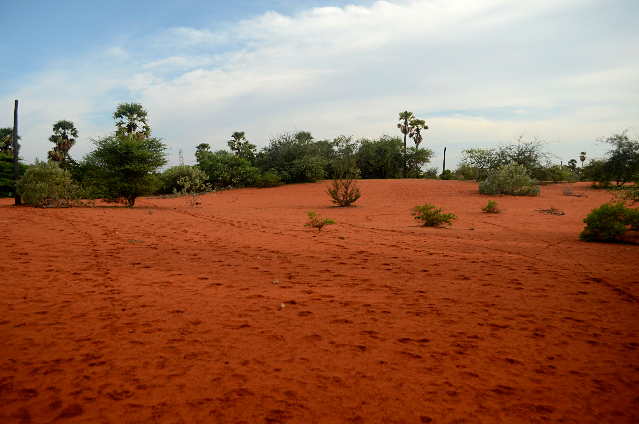Now, the time is here when the South West Monsoon winds mark an outset on the western coasts of India at the closure of the summer season and begin the monsoon season in India that lasts from June to September. The South West Monsoon winds after hitting the western coast of India split into two branches, namely, the Arabian Sea Branch and the Bay of Bengal branch. The monsoon winds cause rainfall over almost the whole of the Indian subcontinent except the northern-western part of India, which is known for the Thar Desert. Similarly, the eastern coasts of India also receive scanty rainfall as both the branches of South West Monsoon winds get offshore by the time they hit the eastern coasts of India leading to less rainfall and the formation of deserts in the region. When it comes to deserts, hardly anyone can think of Tamil Nadu. But, there exists a red-sand desert in Tamil Nadu which has been recently into a discussion when the geological scientists have embarked on the task of studying the mineral composition in the desert region and the theories leading to the formation of the desert. Let's have a look at this article, about that very desert of Tamil Nadu.
As said earlier, most of us may not know the small desert situated in the state of Tamil Nadu. Only the Thar comes to mind when we discuss deserts in India. The Thar Desert has it's location mainly in the northern-western part of the Indian subcontinent and parts of Pakistan as well.
The desert in Tamil Nadu consists of red sand dunes and is confined to Thoothukudi district. The red dunes are called theri in Tamil. They consist of sediments dating back to the Quaternary Period and are made of marine deposits. They have low water and nutrient retention capacity. The dunes are susceptible to aerodynamic lift. It is the force that is the opposite of weight. The study of the composition and properties of the rocks present here and the X-ray diffraction analysis of the red dunes reveal the presence of heavy and light minerals. These include iron-rich heavy minerals like ilmenite, magnetite, hematite, etc. They are present in the soil and have undergone leaching by surface water and were then oxidized because of the favorable semi-arid climatic conditions. The dunes are spread over Kuthiraimozhi Theri and Sathankulam reserve forest of Tiruchendur taluk, which is located on the shoreline overlooking the Bay of Bengal in the south-eastern part of Tamil Nadu.
Theories behind their formation:
- Theory 1: The present-day Theris might have been formed by the confinement of beach sand locally, after the regression of the sea. When high-velocity winds from the Western Ghats blew east, they induced migration of sand grains and accumulation of dunes.
- Theory 2: Another view is that these are geological formations that appeared in a period of a few hundred years.
- Theory 3: The red sand is brought from the surface of a broad belt of red loam in the plains of the Nanguneri region by Southwest Monsoon winds during June-September. The southwest monsoon winds, after draining the moisture behind the Mahendragiri hills and the Aralvaimozhi gap of the Western Ghats, became dry and strike the plains in the foothills, where vegetation is sparse. This churns red loam and is driven east in huge columns of red sand, till they are met by sea breeze near the coastal tract of Tiruchendur and get deposited there. The sand deposited thus also forms a major obstruction, causing more sand to be deposited and the process goes on. Thus, in the due course of time, a dune is formed. The continual sand redistribution takes place in the deserts with the aeolian process.
Thus, Theri Desert again gives testimony to the fact that our country holds geographic diversity in all it's various physiographic divisions as well.
. . .
References:

